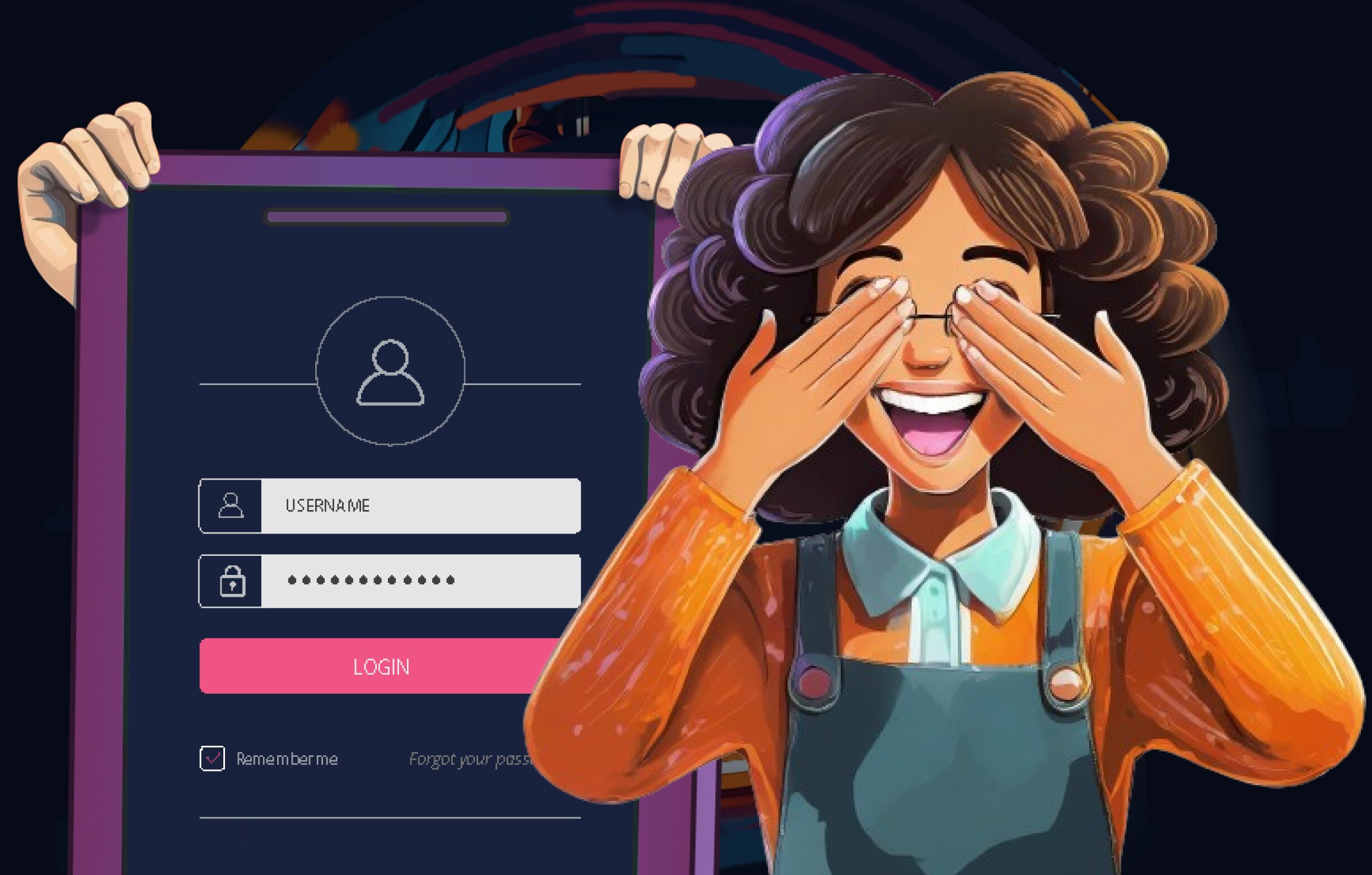With user experiences rapidly evolving to meet the pace of the dynamic industry and keep up with the ever-growing needs of users, user centered design UCD has become the cornerstone of successful design. Even more so, now that mobile-first experiences have taken precedence over traditional user experiences.
Stuti Mazumdar & Vidhi Tiwari - April 2024

We’re witnessing a greater number of users migrating to mobile or hand-held devices when surfing the web. This shift has also brought about changes to the business requirements—they’re now focused on a user-friendly mobile-first experience. Thus, adherence to user-centered design principles is a calculated and proven method to cater to the users’ needs and preferences.
Before breaking into the principles of user-centered design for mobile-first experiences, let’s learn more about what it is.
What is User-Centered Design (UCD)?
User-centered design (UCD) is an iterative design process that prioritizes the needs and preferences of end-users throughout the development of a product or service. The primary goal of user-centered design is to create solutions that are not only functional but also intuitive, efficient, and enjoyable for the people who will use them.
By principle, user-centered design places the users front and center, ensuring each aspect of the product or experience is catered to their needs. Thorough research powers these expeditions, ensuring that designers focus on the users and their needs in each phase of the design process.
Why is User-Centered Design Essential?

User-centered design (UCD) is critically important for several reasons, all of which contribute to the overall success and effectiveness of a product, service, or system. Here are some key reasons why UCD is considered crucial:
Enhanced User Satisfaction:
Fundamentally, a user-centered design process places the needs and preferences of users at the forefront, resulting in products that are tailored to user expectations. This often begins with an extensive user research.
By understanding users’ behaviors and incorporating their feedback, user-centered design approach leads to solutions that are more likely to meet user satisfaction, ultimately fostering positive user experiences.
Reduced Development Costs:
User-centered design is an iterative design process that involves multiple rounds of prototyping and user testing to help identify issues in the early stages of the design process. This helps discover user problems before the development phase, saving time and resources. After all, fixing issues after a product is launched can be much more expensive than addressing them during the design phase.
Improved Usability & Accessibility:
Usability is a core focus of user-centered design. Designing with the user in mind ensures that products are easy to use and navigate, reducing the learning curve for new users. A more usable product leads to increased efficiency, fewer errors, and a higher likelihood that users will continue to use and recommend the product.
Higher Conversion Rates:
In the context of websites and applications, user-centered design (UDC) contributes to a seamless and intuitive user interface, resulting in higher conversion rates.
When users find it easy to navigate and accomplish their goals, they are more likely to convert, whether that means making a purchase, signing up, or engaging with the content.
Competitive Advantage Over Others:
In today’s competitive market, having an edge over your competitors is crucial. Thus, a user-friendly digital experience can be a key differentiator.
Products and services that prioritize user-centered design (UCD) are more likely to stand out in a crowded marketplace. Since a positive user experience can lead to brand loyalty, positive reviews, and word-of-mouth recommendations, giving a competitive edge to businesses that invest in adopting this design process.
Scalability & Adaptability:
The iterative nature of user-centered design (UCD) allows for flexibility in responding to changing user needs and technological advancements.
Regular user feedback and testing enable designers to adapt and refine the product, ensuring it remains relevant and effective over time.
Instilling Brand Trust & Loyalty:
Consistently delivering positive user experiences builds trust and loyalty among users. Users are more likely to return to and recommend products that consistently meet their needs.
Positive experiences contribute to a positive perception of the brand and can lead to long-term customer relationships.
Principles Of User-Centered Design
Understanding what user-centered design (UCD) isn’t enough. Learning more about the principles of user-centered design will help you, as a designer or developer, craft more intuitive and accessible user experiences.

1. User Research
User-centered design (UCD) begins with a thorough understanding of the target audience. Conducting user research helps designers gain insights into user behaviors, preferences, and pain points.
By employing methods such as surveys, interviews, and usability testing, designers can create personas that represent their target users. These personas serve as a reference point throughout the design process, ensuring that the end product design aligns with the needs and expectations of the actual users.
2. Usability
Usability is at the core of user-centered mobile design. Users should be able to navigate through the app effortlessly and perform tasks intuitively. The design should prioritize clarity, simplicity, and consistency to enhance the overall user experience.
Implementing familiar navigation patterns, such as the use of standard icons and gestures, contributes to making the experience user-friendly. Additionally, providing clear calls-to-action and minimizing the number of steps required to complete tasks can significantly enhance usability.
3. Responsive Design
With a plethora of mobile devices available, each with varying screen sizes and resolutions, responsive design is paramount. A user-centered mobile design should adapt seamlessly to different screen sizes, ensuring a consistent and visually appealing experience across devices.
Responsive design not only improves user satisfaction but also positively impacts search engine rankings, as search engines prioritize mobile-friendly websites and applications.
4. Performance Optimization
Hand-held devices have spoiled us with quicker and seamless experiences. Every user interface is now direct and engaging with quicker load times. With this becoming the norm, meeting these expectations is paramount.
Designers must now optimize the performance of their mobile apps. Including compressEd images, minimizing the use of large files, and adopting efficient coding practices are only the first steps. Regular performance testing can identify and address any bottlenecks, ensuring that the application remains responsive and performs well under various conditions.
5. Accessibility
User-centered design (UCD) is about making applications accessible to everyone, regardless of their abilities. Designers should prioritize accessibility features to ensure that individuals with disabilities can use the mobile experience seamlessly.
This involves implementing features like scalable fonts, alternative text for images, and compatibility with screen readers. Considering accessibility from the outset not only expands the user base but also aligns with ethical and inclusive design practices.
6. Personalization
User-centered design (UCD) goes beyond a one-size-fits-all approach. Personalization, especially when designing experiences for mobiles, plays a crucial role in creating meaningful interactions with users.
By analyzing user data and behavior, designers can tailor content, recommendations, and features to individual preferences. Personalized experiences not only enhance user engagement but also contribute to user retention, as users are more likely to stay loyal to an app that understands and caters to their unique needs.
7. User Feedback
User-centered design (UCD) is an iterative design process that focuses constant feedback and refinement. Collecting user feedback through surveys, reviews, and analytics enables designers to identify areas for improvement. Regularly updating and iterating on the design based on this feedback ensures that the app remains relevant and aligned with user expectations. Continuous improvement is key to staying ahead of the competition and maintaining a loyal user base.
8. Security & Privacy
Security is a paramount concern for users in the digital landscape. A user-centered mobile design prioritizes the implementation of robust security measures to protect user data and privacy. Integrating secure authentication methods, encrypting sensitive information, and regularly updating security protocols are essential practices to ensure the safety of user data.
Additionally, it is ideal to design a clear and transparent communication strategy about security features with users to instill trust in the experience and your brand.
Future of the User-Centered Design Approach
The future of user-centered design (UCD) holds exciting prospects as technology continues to advance and user expectations evolve. Artificial intelligence (AI) and machine learning (ML) are poised to play pivotal roles, enabling highly personalized and predictive user experiences. These technologies will analyze vast data datasets, allowing designers to craft applications that adapt dynamically to individual preferences. The integration of augmented reality (AR) and virtual reality (VR) introduces new challenges and opportunities, demanding innovative approaches to user-centered design in immersive environments.
As we delve into an era of heightened connectivity and emerging technologies, ethical considerations in user-centered design (UCD) become paramount. Designers will continue to be tasked with upholding principles of inclusivity and ensuring that applications cater to users of diverse abilities and backgrounds. The improvement of the user-centered design process lies not only in technological advancements but also in the commitment to creating digital experiences that are not only seamless and efficient but also ethical, inclusive, and deeply attuned to the ever-changing needs of users in our dynamic digital landscape.




